The government approval for the Aviation arm of the Indian Army to acquire attack helicopters is the outcome of decades of dialogue, representations, haggling and persistence. The resistance by the Indian Air Force (IAF) was unrelenting, bitter and just as forceful as it was against the setting up of the Army Aviation Corps. And as is wont to happen in our defense decision making architecture, whenever there is a difference of opinion, decisions are not forthcoming.
The Army’s claims for setting up its Aviation Arm and its subsequent expansion have met with considerable resistance…
The Aviation Corps of the Indian Army was formed only in November 1986. It was probably the last among the modern armies of the world to get such a Corps. Till this time, the only aviation assets that the army exercised operational control over were the Air OP flights. These were Air Force units equipped with a mix of rotary or fixed-wing light machines meant primarily for reconnaissance, surveillance, target acquisition and direction of artillery fire. The other missions that these units could undertake were casualty evacuation and communications.
A remarkable feature of the Air OP units was its unique organisation. As these were Air Force units, maintenance and logistic support including manpower were provided by the IAF. Pilots, radio operators, vehicles and drivers were drawn from the Indian Army. While the Air OP flights were commanded by officers of the Indian Army, strangely enough, the post of the Adjutant was held by an officer from the IAF. The operational control of these units was with the Indian Army. In all other matters, the IAF exercised full control.
For all other aviation requirements, the Indian Army had to depend on the IAF for which elaborate procedures had to be jointly formulated and disseminated. During peacetime, joint training remained a subject of considerable emphasis. But in practice, coordination and cooperation worked only occasionally. From the Indian Army’s point of view, this arrangement has never worked satisfactorily; an arrangement that led to sub-optimal exploitation of air assets in war and during emergencies. The controversies that erupted after the Kargil War (also after all earlier wars) and continue to rage even more than a decade after, are testimony to the discord and dissonance inherent in the system for the employment of the air component in support of the Indian Army. The defence services could do well without the bickering and the recriminations that the Indian Army and the IAF are prone to engage in frequently.
Admittedly, there are other vital issues such as avoidance of duplication of assets that can often be wasteful, the need to optimise total defence capability and the complexity of air space management that must weigh in on such decisions. And therefore, for some very valid reasons the Indian Army’s claims for setting up its Aviation Arm and its subsequent expansion have met with considerable resistance.
Before proceeding further it may be prudent to delve into history of the evolution of air warfare. It is believed that the Chinese were the first to use hot air balloons in second and third century BC. Thereafter, the third dimension in warfare made its first reckonable debut during the latter half of the eighteenth century when the French Aerostatic Corps used a tethered balloon to gain a vantage point in the Battle of Fleurus (1794). This was followed by the use of dirigibles and even manned balloons in the American Civil War and the American-Spanish War. The focus was primarily on extending observation for the army.
The real revolution in military aviation was spurred by the Wright brothers. After their historic first flight, they built and delivered in 1909 the first aircraft to the Aeronautical Division set up by, interestingly, the US Army Signal Corps. The US Navy was equally far-sighted when, in 1910, it began to look at how aviation could support warfare at sea. It is said that even aircraft carriers were conceptualised around this time. Within four years after some experimentation the US Army aviators succeeded in raising the first Aero Squadron in December 1913.
Unless the procurement process is streamlined and made time-bound, India’s defence capability will remain woefully inadequate…
By 1917, when the US entered World War I, its aircraft industry was not as advanced as that in Europe where aviation had received much greater attention. As early as in 1911, Europe was the first to witness the use of aircraft for bombing in the Italo-Turkish War. From observation to bombing was the inevitable next step.
The air arm perhaps witnessed the most rapid and accelerated growth during World War I and after. Its missions graduated from observation to bombing to aerial combat. But all through this period, the air component was part of the army and was used explicitly for the support of the land war. The British were the first to set up an independent air force in 1918. Others in Europe followed much later, in the years before the outbreak of World War II. The US was the last to introduce it in 1947. In the case of Israel till at least a decade ago, the Air Force of the IDF was completely under the command of the Israeli Army.
But what is important to note is that all armies retained flying assets considered essential for the effective prosecution of the ‘Air-Land Battle’. The principle of unity of command was not compromised. So even today, a much-diminished British Army has a fleet to include Apaches, Lynx, Gazelle, Squirrel helicopters and the Defender aeroplanes. Closer home, Pakistan Army Aviation was raised in 1958, almost thirty years before India did. Besides, it possesses a formidable fleet of a variety of aircraft both rotary and fixed-wing.
Information in this regard available from Wikipedia is as under:-
|
Aircraft/System |
Role |
Quantity |
Comments |
| AH-1F/S Cobra | Attack helicopter |
40[4] |
One squadron supplied in 2010.[5] |
| IAR 330 | Utility Helicopter |
4 |
|
| Eurocopter Fennec | Attack Helicopter |
6 |
At least 20 AS550 C3 ordered, currently under testing in Rawalpindi |
| Harbin Y-12 | Utility Aircraft |
2 |
|
| Cessna Citation Bravo | Transport Aircraft |
2[4] |
|
| Aero Commander 840 | Transport Aircraft |
2[4] |
|
| Mil Mi-17 | Transport Helicopter |
93 |
|
| Bell 206 Jet Ranger | Utility Helicopter |
20[4] |
|
| Bell 412 | Utility Helicopter |
58[6] |
|
| Bell UH-1 Huey | Utility Helicopter |
45[7] |
|
| Eurocopter AS350 | Utility Helicopter |
10[4] |
|
| Aérospatiale SA 330 Puma | Utility Helicopter |
60[4] |
|
| Aerospatiale SA.316 Alouette III | Utility Helicopter |
15[4] |
|
| King Air 350i | SIGINT & ISR |
3 |
One recently ordered. |
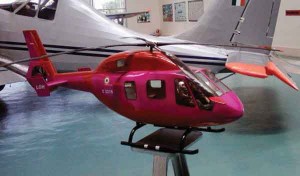 The disparity between the inventory holdings of the Chinese Army Aviation the Indian Army Aviation Corps is again huge. Listing the Chinese PLA holdings would be meaningless at this point of time. The basic point is that the Indian Army Aviation, like some other combat arms of the Indian Army, requires urgent infusion of resources in order to upgrade combat capabilities to the desired levels. Instead of feeling threatened and stonewalling acquisitions, the IAF must cooperate, encourage and support expansion of the Army Aviation Corps. In this context, it is pertinent to note that the Indian Navy hardly encountered any resistance in the raising of its fleet air arm or its subsequent growth.
The disparity between the inventory holdings of the Chinese Army Aviation the Indian Army Aviation Corps is again huge. Listing the Chinese PLA holdings would be meaningless at this point of time. The basic point is that the Indian Army Aviation, like some other combat arms of the Indian Army, requires urgent infusion of resources in order to upgrade combat capabilities to the desired levels. Instead of feeling threatened and stonewalling acquisitions, the IAF must cooperate, encourage and support expansion of the Army Aviation Corps. In this context, it is pertinent to note that the Indian Navy hardly encountered any resistance in the raising of its fleet air arm or its subsequent growth.
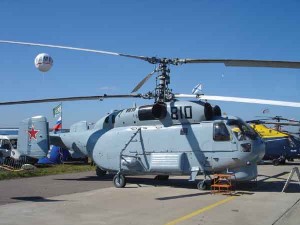 Broadly, the ‘Air-Land Battle’ concept articulated in the 1970s was characterised by the tenets of Initiative, Agility, Depth and Synchronisation. Warfare now has graduated to what is termed as ‘full spectrum warfare’. This is essentially super-imposing the synergised exploitation of technologies in communications, electronic warfare and space. In the formulation of plans and force structuring, there is a need to accelerate the process of acquiring the capability for next generation warfare. But the building block is the Air-Land Battle fighting capability. Tragically, the capability and the wherewithal to fight the Air-Land Battle effectively is yet to be acquired.
Broadly, the ‘Air-Land Battle’ concept articulated in the 1970s was characterised by the tenets of Initiative, Agility, Depth and Synchronisation. Warfare now has graduated to what is termed as ‘full spectrum warfare’. This is essentially super-imposing the synergised exploitation of technologies in communications, electronic warfare and space. In the formulation of plans and force structuring, there is a need to accelerate the process of acquiring the capability for next generation warfare. But the building block is the Air-Land Battle fighting capability. Tragically, the capability and the wherewithal to fight the Air-Land Battle effectively is yet to be acquired.
One vital component of the Air-Land Battle is the allocation of adequate aviation resources/capability in the theatre at the operational and tactical levels. Such resources must be integral to the force structures. From the Indian Army’s point of view, this principle regrettably has not been observed. Consequently, the Indian Army’s combat capability has been avoidably circumscribed. This lacuna must be addressed on priority.
Briefly, the missions that the Army Aviation can be expected to perform in battle are:-
• Reconnaissance, Surveillance and Target Acquisition
• Fire Support
• Communications
• Electronic Warfare
• Airborne Operations
• Logistics Support to include:-
• Casualty Evacuation
• Troop movement, reinforcement, redeployment at the strategic, operational and actical levels
• Ammunition and fuel resupply
Situations in war will demand unforeseen requirements. Mental agility and flexibility in approach will be the keywords for optimum utilisation of resources.
Each of the above missions requires a particular type of aircraft be it rotary or fixed-wing. Selection and scaling requires expertise and considerable diligence. Acquisition plans must take into account a multitude of complex considerations including the existing Unmanned Aerial Vehicle (UAV) inventory and planned acquisitions. It would be terribly wasteful if the acquisition plans of these platforms are not coordinated with extreme care. UAVs are relatively new and are being acquired for various roles and functions. Even a cursory look will suggest that there is considerable overlap in functions and capabilities. So the choice of platforms must be made with great care. The potential of UAV platforms are limitless. The effective drone strikes that have been witnessed in Afghanistan are evidence enough of the enormous versatility of UAVs. Many believe that this is where the future is.
So far the Indian Army has confined the allocation of integral aviation assets to the division and higher levels. Given the limitation of budgets and the host of competing demands, for the time being, it would not be advisable to change this policy for anything more ambitious. Some exceptions may have to be made in the Ladakh or the Arunachal Pradesh sectors because of the compulsions of terrain. While on the subject of mountainous terrain, attention needs to be drawn to the lack of focused effort to specially pursue or develop technologies that enable platforms to operate in this region. Such terrain and climatic conditions are unique to India. The global arms industry concentrates on domestic markets or systems that have a broadly universal application. So it is the Indian defence industry that either on its own or in collaboration must concentrate on a range of systems that will enhance force capability in the mountains.
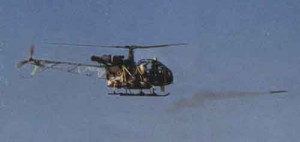 In the Indian context, while concepts and doctrine formulation do receive reasonable attention and thus have a contemporary flavour, the process of acquisition of weapon and support systems continue to be unreasonably sluggish. Take for instance, the acquisition of the replacements for the outdated Cheetah and Chetak helicopters. The case was initiated before the turn of the last century. The order for the first batch of 197 helicopters is yet to be placed. Unless the procurement process is streamlined and made time-bound, India’s defence capability will remain woefully inadequate. Revising procedures every year to make them more rigorous is inexcusable escapism.
In the Indian context, while concepts and doctrine formulation do receive reasonable attention and thus have a contemporary flavour, the process of acquisition of weapon and support systems continue to be unreasonably sluggish. Take for instance, the acquisition of the replacements for the outdated Cheetah and Chetak helicopters. The case was initiated before the turn of the last century. The order for the first batch of 197 helicopters is yet to be placed. Unless the procurement process is streamlined and made time-bound, India’s defence capability will remain woefully inadequate. Revising procedures every year to make them more rigorous is inexcusable escapism.
One other important consideration that must be factored in the formulation of force structures and equipment profiles of the three Services is the proposal of appointing a Chief of Defence Staff (CDS) and setting up of theatre commands. If the country accepts this long standing proposal, there would be a case to revisit projections by each Service in order to optimise capability. In conclusion, the raising of the Army Aviation Corps was inordinately delayed. It must make up for lost time and for that, the system must collectively provide the required push.




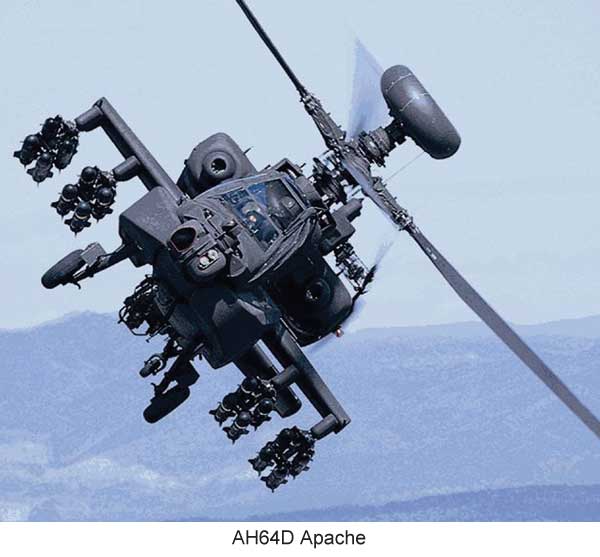
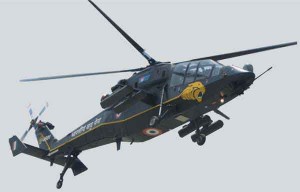
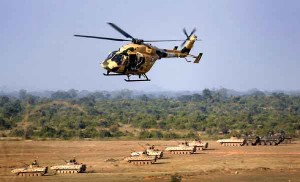

Recent incident of Air Force officer abandoning the hreptr and running away is a shameless incident while the Air force Chief brushed it side as a routine matter and now they are reported to be sending four Garuda armed men with each flight shame -shame
During 71 ops in Shakargarh area where there was a thrust of two Armoured Brigades and a number of Infantry divisions our aircraft’s were never to be seen but the opposite side bombed and strafed us at least six times (our half side) while the Air Force GLO shifted from the Armoured Personnel carrier ( less Armoured) to a tank (more Armoured and safer) and sitting on his haunches and listening to news if at all we saw an Indian Aircraft was a Sukhoi 7 being shot down by a Sabre.
The reason why i am siteing these examples is the attitude of the Airforce people and complete lack of synergy and coordination between both the services/arms which cannot be brought in by writing office notes
ALL THINGS SAID AND DONE ARMY NEEDS ITS OWN AIR FORCE AND A DEDICATED ALLOTMENT OF AIR EFFORT